Abstract
Propagated (free-field) ultrasonic energy at a frequency of 26 kHz was used to expose aqueous suspensions of bacteria (Escherichia coli, Staphylococcus aureus, Bacillus subtilis, and Pseudomonas aeruginosa), fungus (Trichophyton mentagrophytes), and viruses (feline herpesvirus type 1 and feline calicivirus) to evaluate the germicidal efficacy of ultrasound. There was a significant effect of time for all four bacteria, with percent killed increasing with increased duration of exposure, and a significant effect of intensity for all bacteria except E. coli, with percent killed increasing with increased intensity level. There was a significant reduction in fungal growth compared with that in the controls, with decreased growth with increased ultrasound intensity. There was a significant reduction for feline herpesvirus with intensity, but there was no apparent effect of ultrasound on feline calicivirus. These results suggest that ultrasound in the low-kilohertz frequency range is capable to some degree of inactivating certain disease agents that may reside in water. The physical mechanism of inactivation appears to be transient cavitation.
Full text
PDF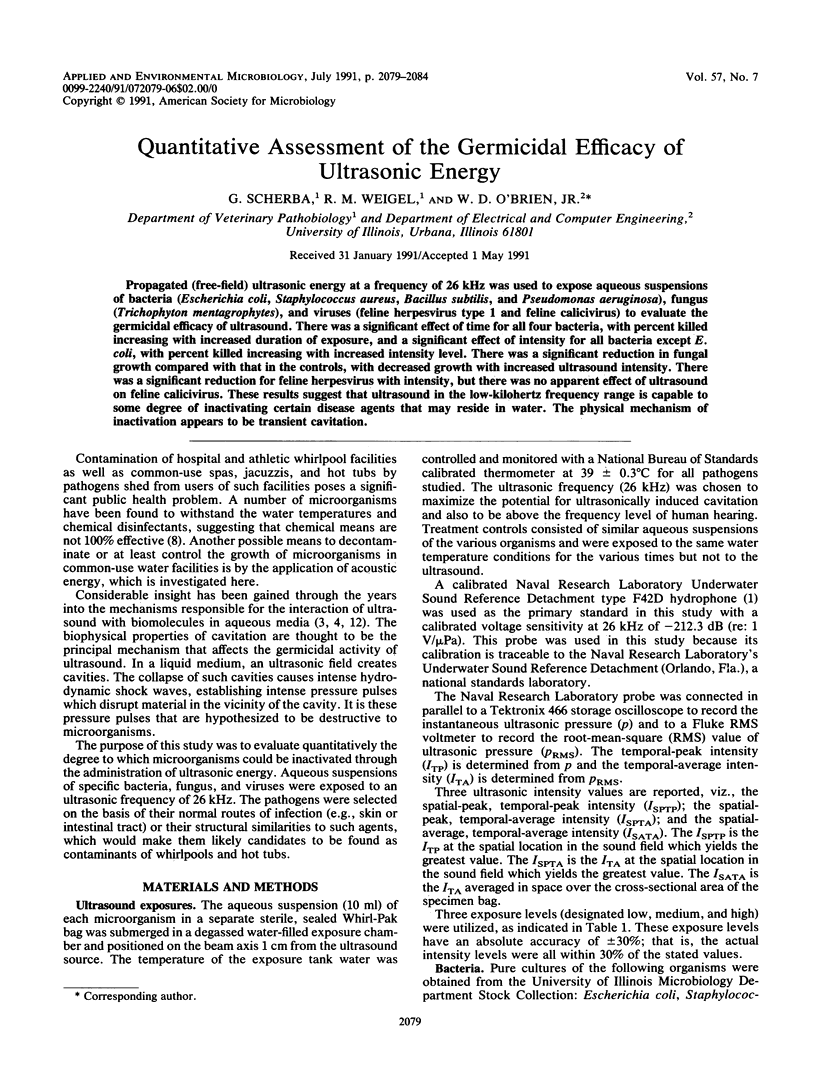
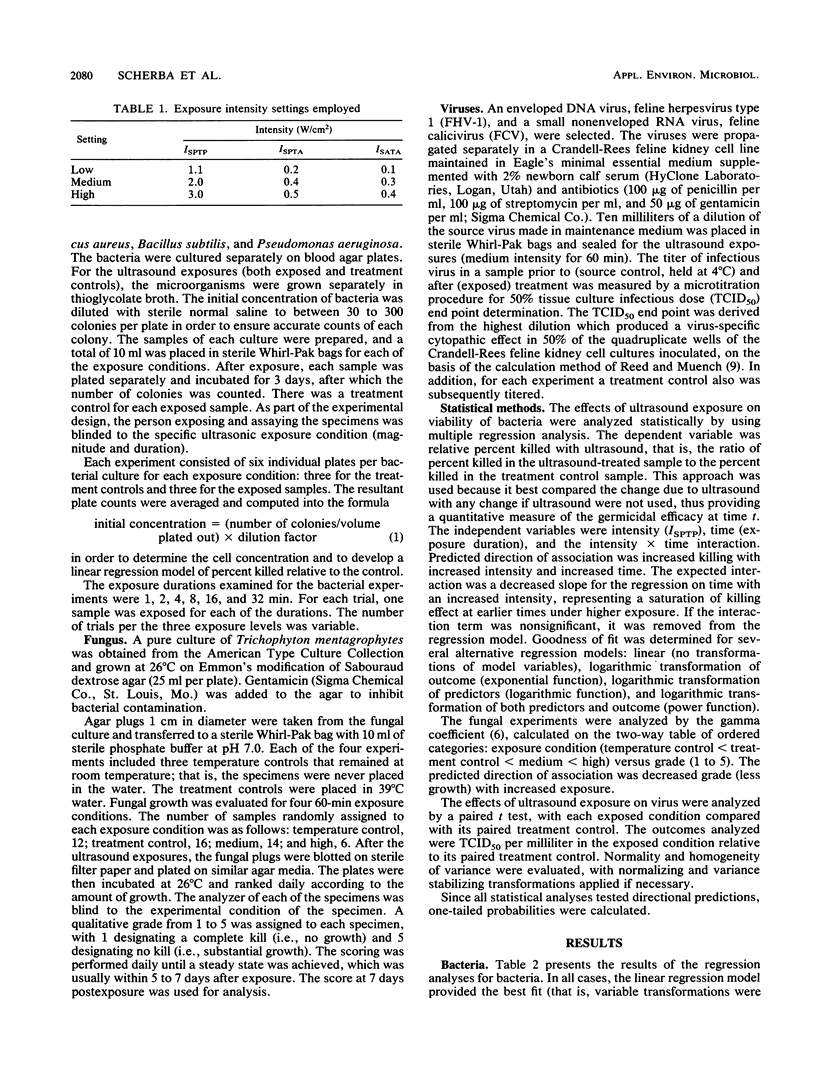
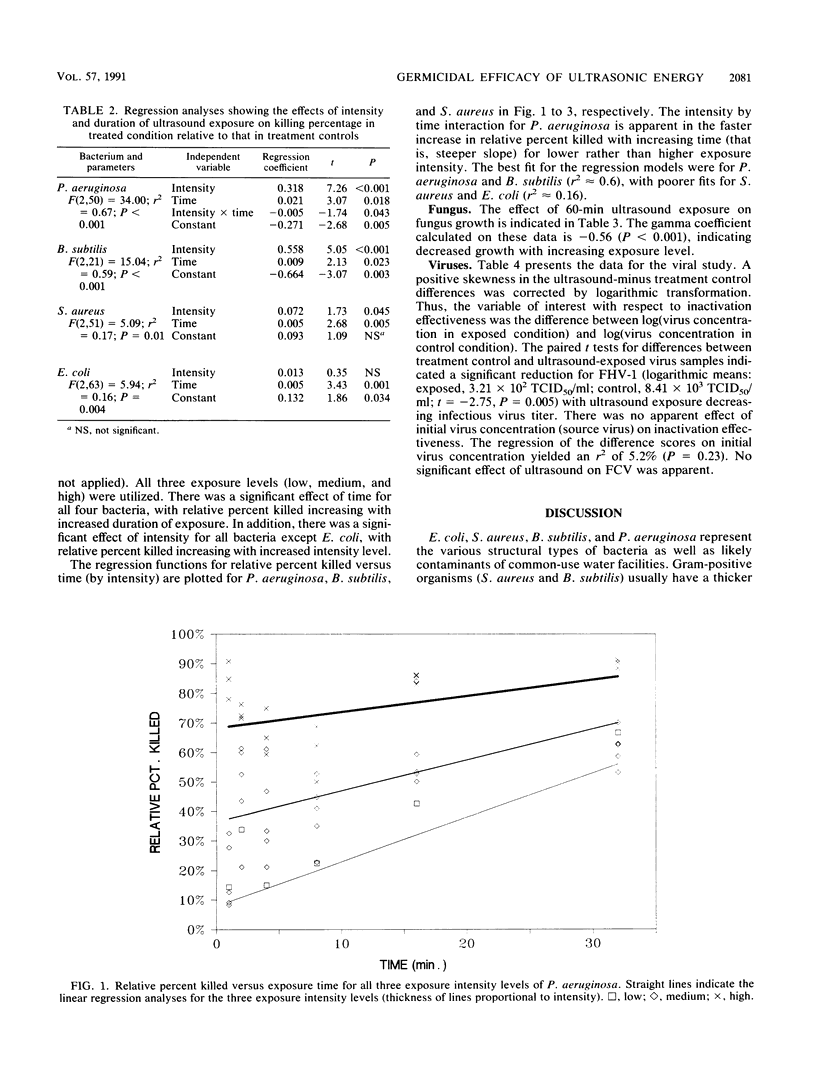
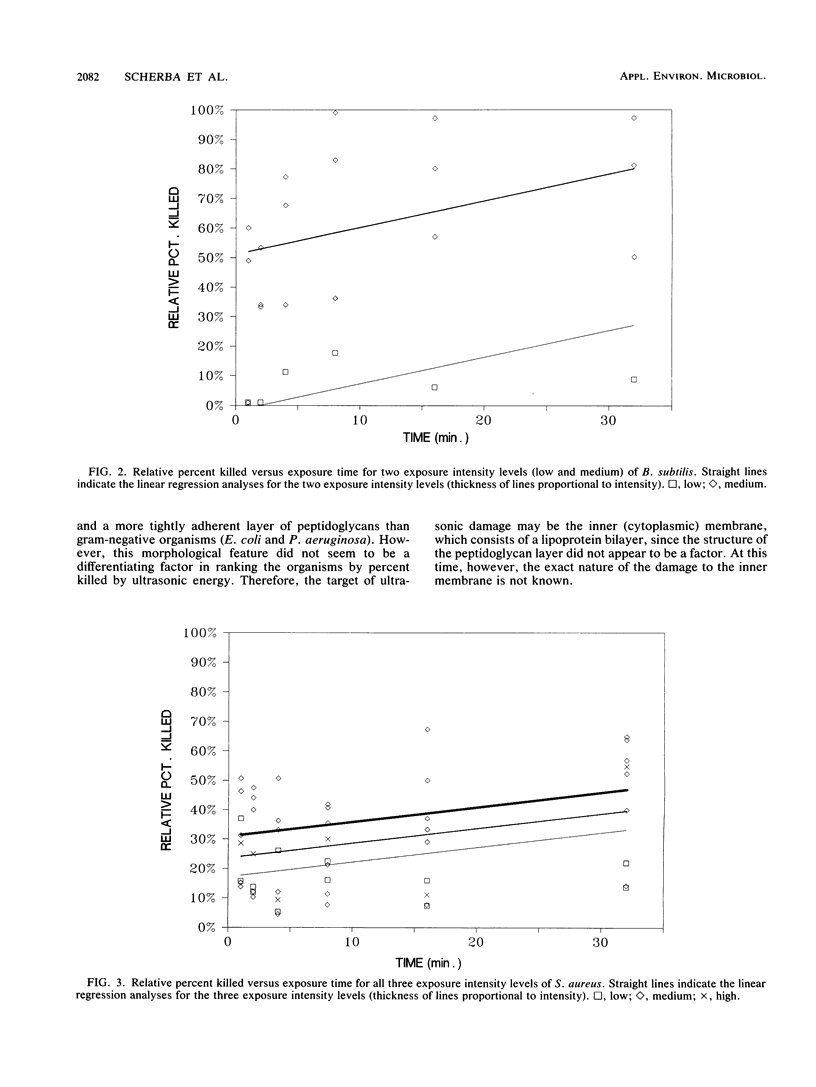
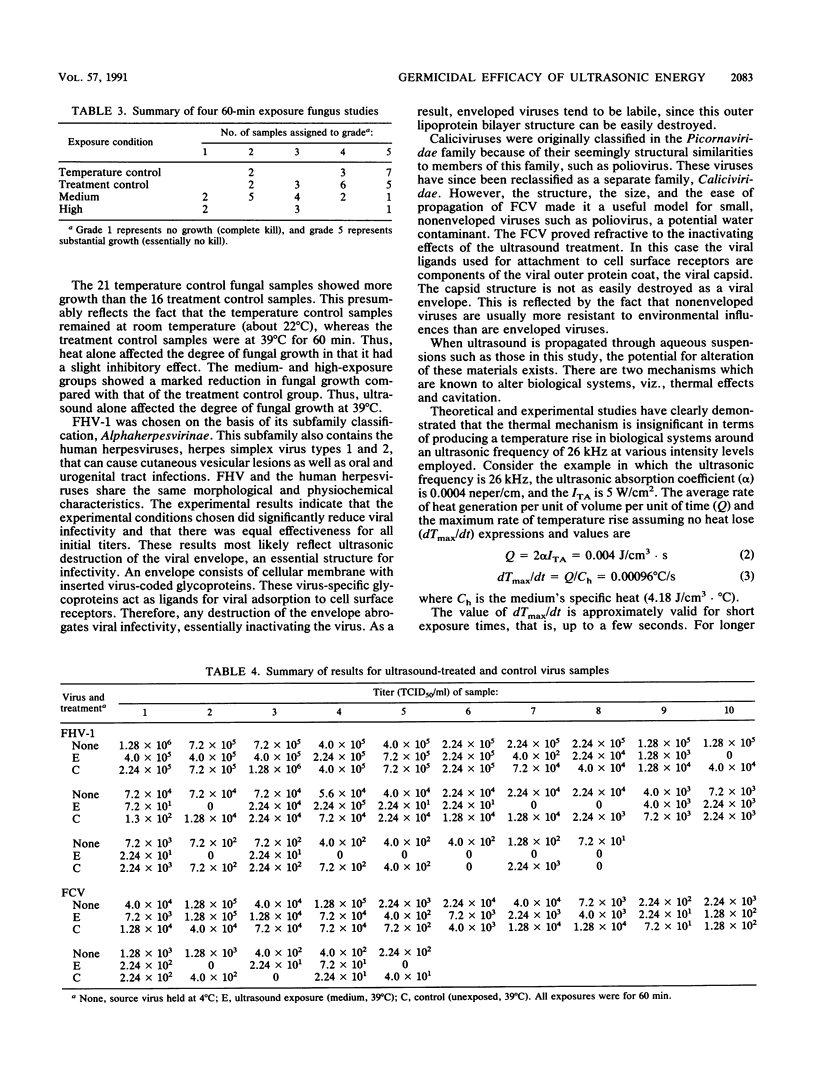
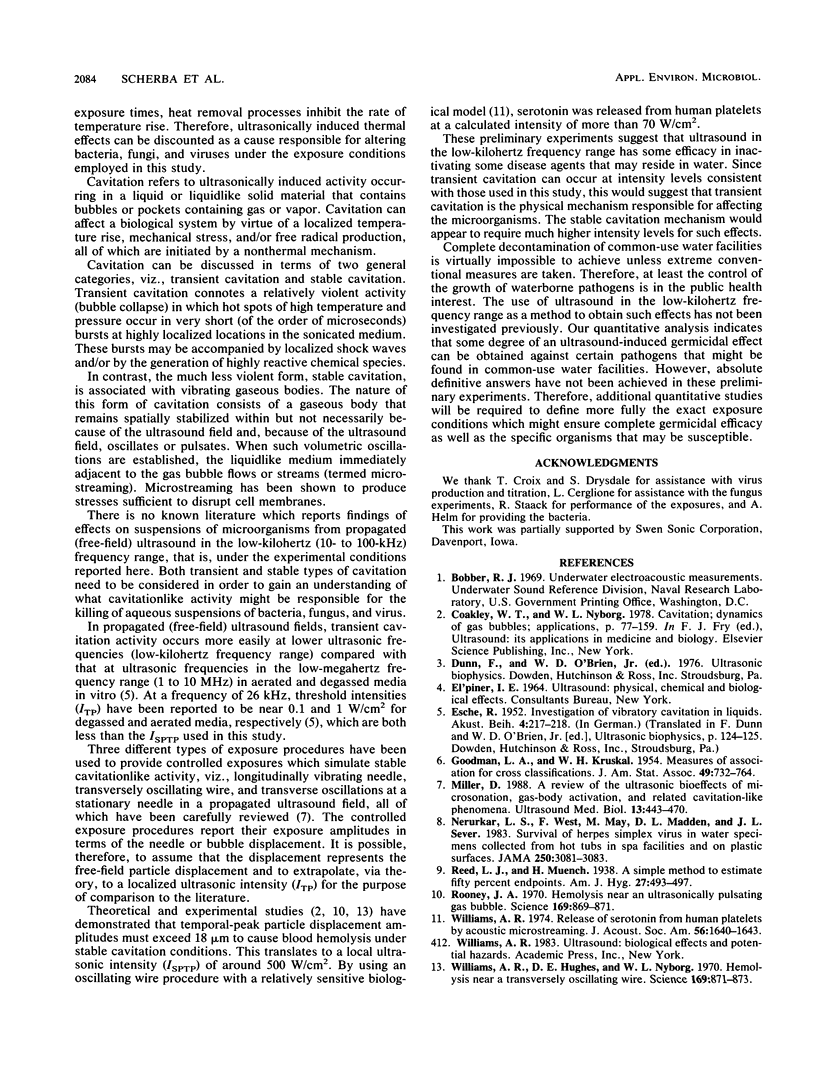
Selected References
These references are in PubMed. This may not be the complete list of references from this article.
- Miller D. L. A review of the ultrasonic bioeffects of microsonation, gas-body activation, and related cavitation-like phenomena. Ultrasound Med Biol. 1987 Aug;13(8):443–470. doi: 10.1016/0301-5629(87)90110-4. [DOI] [PubMed] [Google Scholar]
- Nerurkar L. S., West F., May M., Madden D. L., Sever J. L. Survival of herpes simplex virus in water specimens collected from hot tubs in spa facilities and on plastic surfaces. JAMA. 1983 Dec 9;250(22):3081–3083. [PubMed] [Google Scholar]
- Rooney J. A. Hemolysis near an ultrasonically pulsating gas bubble. Science. 1970 Aug 28;169(3948):869–871. doi: 10.1126/science.169.3948.869. [DOI] [PubMed] [Google Scholar]
- Williams A. R., Hughes D. E., Nyborg W. L. Hemolysis near a transversely oscillating wire. Science. 1970 Aug 28;169(3948):871–873. doi: 10.1126/science.169.3948.871. [DOI] [PubMed] [Google Scholar]
- Williams A. R. Release of serotonin from human platelets by acoustic microstreaming. J Acoust Soc Am. 1974 Nov;56(5):1640–1649. doi: 10.1121/1.1903490. [DOI] [PubMed] [Google Scholar]


